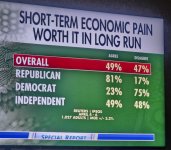Direct from the Feds Web site.
.
The IRS has shed more than 20% of its workforce since President Donald Trump took office, wiping away the Biden administration’s highly touted hiring gains. Those cuts have yet to factor in widespread layoffs, which are still forthcoming and expected to bring the tax agency’s workforce down to numbers not seen in at least 45 years.
“The roll back of wasteful Biden-era hiring surges, and consolidation of critical support functions are vital to improve both efficiency and quality of service,” a senior Treasury official told Nextgov/FCW in a statement. Treasury Secretary Scott Bessent “is committed to ensuring that efficiency is realized while providing the collections, privacy, and customer service the American people deserve.”
Under the Biden administration, the IRS went on a hiring spree with funding provided by Congress in the Inflation Reduction Act to close the tax gap, modernize technology and improve customer service. Republicans have since pushed to strip away much of that funding boost.
“The Biden Administration grew the IRS from 79,431 to 102,309 personnel. Under new leadership, approximately the same number of employees have left the IRS, with a vast majority leaving voluntarily through the Deferred Resignation Program,” the official said.
So far, more than 20,000 IRS employees have been approved for the DRP, which enables employees to take paid leave through September before they must leave the government. That figure includes both resignation offers from Treasury, according to data from the IRS inspector general and an employee briefed on the most up-to-date information. An additional 1,600 have taken early retirement or buyout incentives.
IRS has also sought to fire 7,300 probationary employees, but they are, for now, back at the agency under a now-defunct court order.
An additional 7,000 IRS employees have signed up for the deferred resignation, but their requests are still pending approval. The agency has promised widespread layoffs but has so far implemented those only on a small scale. More widespread reductions in force have been delayed but are still expected, according to an employee briefed on the plans and internal documentation obtained by Nextgov/FCW.
If the pending DRP applications go through and the probationary employees are once again removed, the IRS workforce would sit at around 66,000 employees. Additional RIFs would likely bring the agency to below 60,000 workers.
“The ability to upload more documents, the more functionality in the individual taxpayer account and business tax account, more technology in the call center and the 1000s of customer service reps that were hired for both the phone and in the walk-in centers proved resilient and enabled what appears to have been a successful 2025 filing season,” said Danny Werfel, former IRS commissioner who stepped down in January after Trump announced that he would install a replacement.
“To describe those hires as wasteful really is counterintuitive given it’s been reported that the administration protected those particular hires from being laid off,” he noted.
The staffing reductions have indeed hit the agency unevenly. The number of revenue agents that do audits has declined by about 31%, and the number of revenue officers that collect delinquent taxes has shrunk by 18%, according to the recent TIGTA report. The size of the contact representative workforce at the tax agency, meanwhile, has only shrunk by 10%.
The IRS will see further cuts to its workforce as it pursues layoffs, some of which have already started. The IRS put 48 IT employees on administrative leave in March, and announced in April that it was starting a reduction in force in several offices, including its Taxpayer Experience Office.
Treasury Secretary Scott Bessent told lawmakers on Tuesday that smarter technology and the use of artificial intelligence can enhance the agency’s collection activities moving forward.
Still, 2,000 technology-focused employees alone at the IRS have opted into the deferred resignation program, IRS CTO Kaschit Pandya told employees Wednesday in a meeting, a recording of which was obtained by Nextgov/FCW. And that number could go up, as people over the age of 40 have more time to decide, he said. Already, the 2,000 departures marks an exodus of about one-quarter of the IRS IT workforce.
“We need to start thinking about, ‘What does a leaner IT organization look like, and how we will center it around core functions?’” Pandya said.
Since January, IRS has seen many top leadership changes as it's made headlines over sharing taxpayer data with immigration enforcement officials, a major shift in policy. Many of the agency’s C-suite executives, including its chief information officer, have also departed the IRS, which announced a pause of its technology modernization work in March.
“Until technology solutions are up and running and proven effective, eliminating staff responsible for collections damages the government's financial bottom line,” Werfel said.












